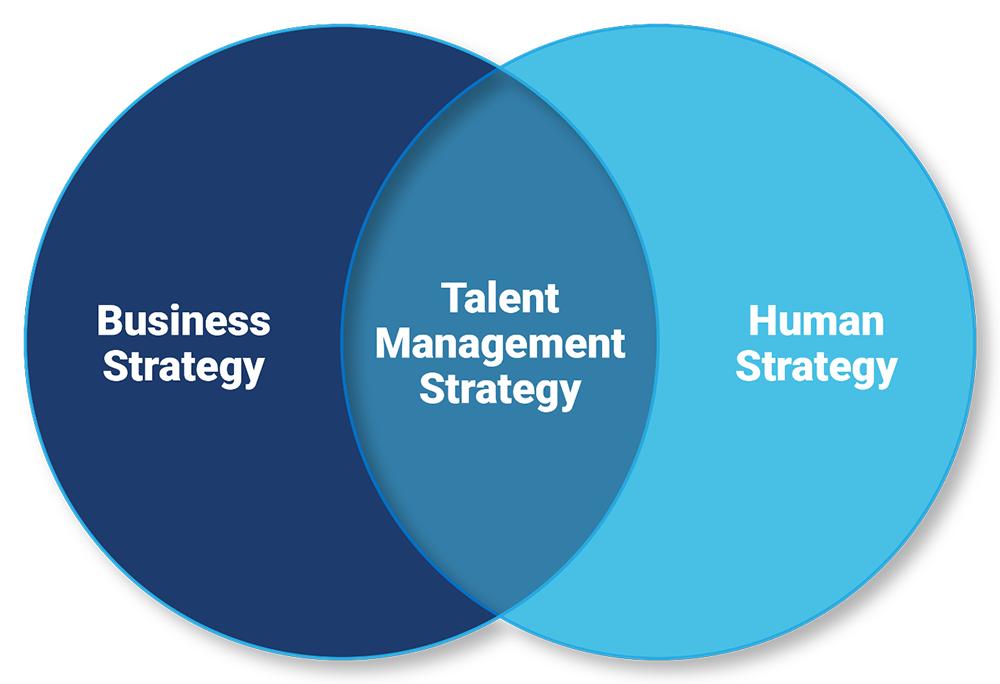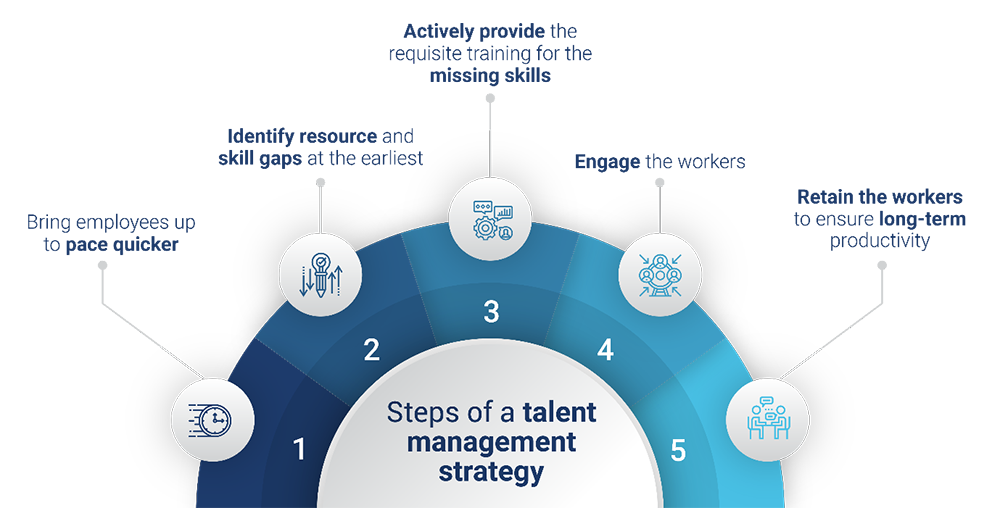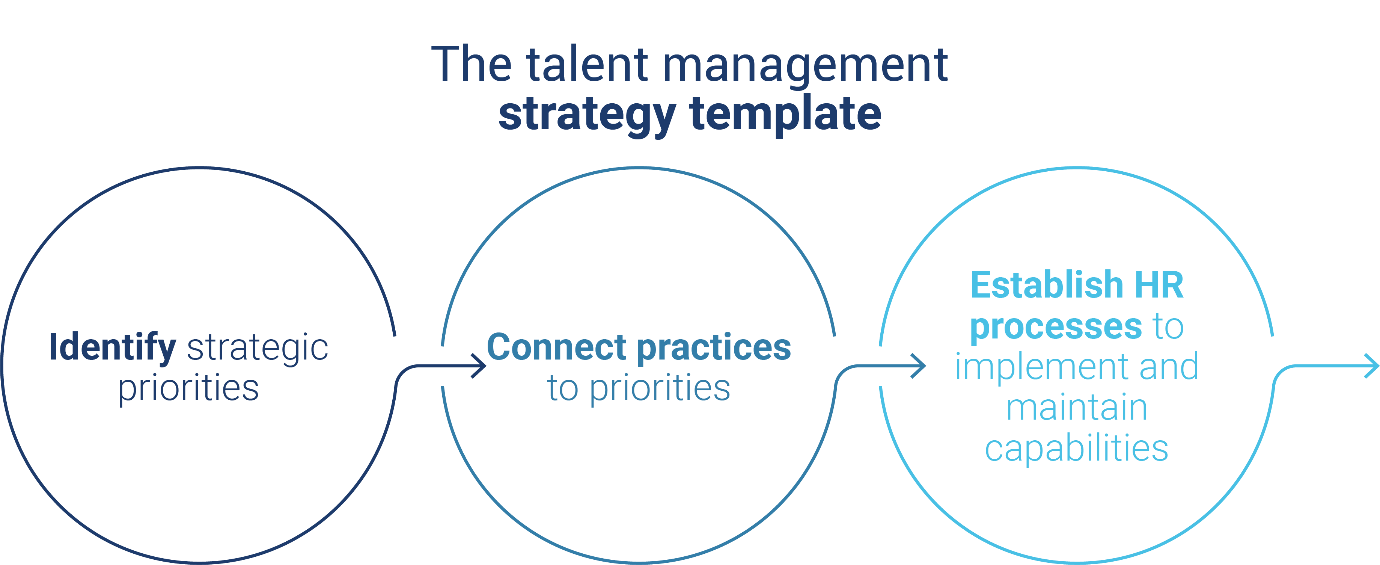
Talent management is not just about managing the people working for an organization – it has a significant bearing on organizational performance. Sample the following from a McKinsey survey:
This should mean everyone will focus on talent management as a means of driving organizational growth. But that is not the case, as only 5 percent or respondents feel their talent management has been very effective at improving company performance.
Talent management covers the entire chain of HR activities dealing with attracting, onboarding, developing, engaging, and retaining high-performing members of the workforce. The aim is to sync the talent strategy of the organization with its overall business strategy, and thereby enable it to achieve its goals.
This implies that good talent management is key to helping a company win in the market. And that is where a talent management strategy comes in – it is a plan of action aiming at optimizing the performance of employees and boosting their engagement and productivity.
A talent management strategy shifts the focus of HR beyond just acquiring talent and managing performance. It facilitates a smoother HR function and allows management to plan how to recruit and retain top performers, employing them to work toward specific goals of the business and offering them better compensation than their competitors.

A talent management strategy is not a standalone project – it requires an integrated approach, whereby this strategy is aligned with the future direction and vision of the business as well as its overall strategy. A well-developed talent management strategy comes about when the business strategy and the human strategy come together.

A talent management strategy is based on the understanding that if you provide the resources to do a job well, employees perform better. The belief is that:
To achieve the above, a talent management strategy needs to include the following key steps:

Given how important it is to manage talent such that the organization gains in its market performance, a talent management strategy has a broad compass. These are its chief areas of concern:
Every strategy for a particular operational area of a business starts with the overall business strategy. Accordingly, the following template is a good starting point for a talent management strategy:

Records are meant to be broken… and strategies, to be disrupted. Specific challenging elements include:
Workforces and workplaces both are changing, with workers from different generations in the same workforce. Their expectations and needs differ, as does their readiness for a new way of work. From merely turning up at the job, they look to purposeful work aligned with their values yet beneficial for their company. All these diverse elements must align with and integrate with each other, as otherwise, the mere ‘checking the box’ situation will have people mechanically completing the requisite steps instead of truly valuing their work.
The path to a game-changing talent management strategy is not smooth. An effective talent management strategy brings together quick talent allocation, a great experience for employees, and an HR team tuned to working in a strategic manner. Assess available and required talent, develop a global leadership pipeline, activate employees through development and engagement measures. With these key practices in place, the organization will be well placed to outperform its peers in the marketplace!

CredBadge™ is a proprietary, secure, digital badging platform that provides for seamless authentication and verification of credentials across digital media worldwide.
CredBadge™ powered credentials ensure that professionals can showcase and verify their qualifications and credentials across all digital platforms, and at any time, across the planet.

Please enter the License Number/Unique Credential Code of the certificant. Results will be displayed if the person holds an active credential from TMI.